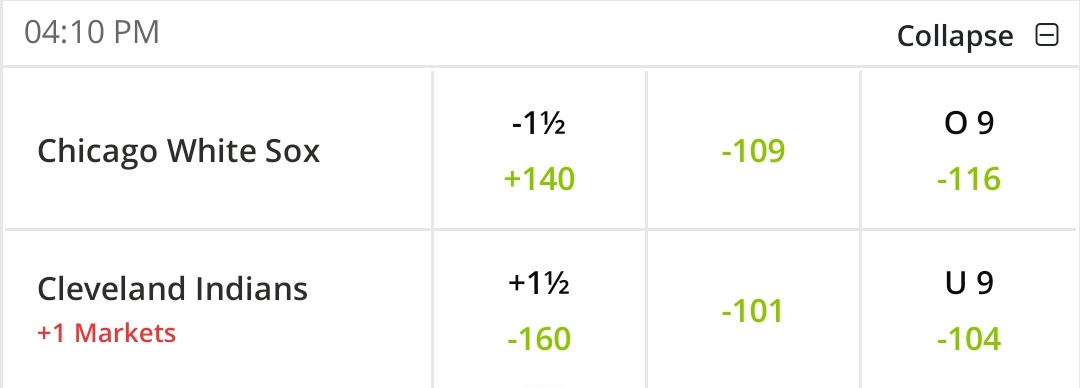Ml Betting Meaning
A common question from new or casual sports bettors is “What is a unit?”. A popular term in sports betting is “unit” and below I will explain what bettors mean they refer to a unit, and examples of it being used.
A “unit” in sports betting is a measurement of the size of someone’s bet. Because everyone has different sized bankrolls for sports betting, using the term unit is a way for us to show your profit or loss in universal terms.
Someone who is betting $10,000 per bet against the spread in NFL and is up $18,000 on the season isn’t nearly as impressive as someone who bets $10 per bet against the spread and is up $180 on the season. Using units gives us a tool to keep track of profits and losses without the dollar value.
Because basic sports betting strategy tells us that you should be betting somewhere between 1-5% of your bankroll on each wager, it is generally accepted that a unit is equal to approximately 1% of your bankroll. Nothing is set on stone with this, but that is an easy way to calculate a single unit.
Using the above formula, someone who has a $1,000 bankroll would be betting $10 per unit, while someone with a $50,000 bankroll would be betting $500 per unit.
Each team/person in a matchup for a moneyline betting option is given a separate numerical value for bettors to wager on and these are called “odds.” The numbers, or odds, are determined by oddsmakers and sportsbooks based on how the two opponents match up, and each number is displayed with a minus sign (-) or a plus sign (+) in front of it. Betting $1000 on a -1000 moneyline returns a $100 profit and that’s a lot of money to risk for such a small reward. When considering NBA moneylines, watch for decent odds on home teams in.
Using the bankroll management strategy that recommends 1-5% of your bankroll on each bet you would essentially want to bet between 1-5 “units”.
Many sports handicappers will release their plays with units, with the most common being 1-5 units or sometimes 1-7 units. The 1,2, and 3 unit plays are more of the average plays, while the 4, 5 and sometimes 6 and 7 unit plays are the big plays where the handicapper feels they have found a lot of value on a play.
If a handicapper released a 5 unit play and you had a $1,000 sports betting bankroll you would be risking 5% (5 units) or $50 on the play.
When a bettor says he is +25 units on the year what does that mean?

This would be a measurement of his success on the season so far. Referring to being +25 units means he is “plus” 25x whatever 1 unit is to him. This could be +$25 for someone, while it could be +$25,000 for another.
How can a handicapper with a 25-32 record be +15 units?
It is possible to have a sub .500 record but still be up units if you are betting on underdog or “plus money” selections. For example, picking only NFL underdogs on the money line could lead to a negative record but profits on the season.

Can a sports bettor actually be +1546 units?
There is a lot of ways you can inflate your numbers to make yourself sound good. Like I said earlier a unit = 1% is just a general guideline and everyone has their own way of doing things. Read the fine print. 1 unit to that bettor could 0.001% of their initial bankroll for all we know.
Below is a video basically going over what was said above…
Ready to take your new sports betting knowledge to work? Get started at Bovada.lv with a $250 sign up bonus if you don’t have an account there already!
In the world of sports betting, a money line bet is simply betting on which team you expect to win. It doesn’t have anything to do with a spread. You may also see a money line bet listed as “Money Line” or “ML” in different spaces.
Money lines are represented in negative and positive values.

Negative money line: -145, -220, or anything similar
When you see a minus (-) sign in front of a price, it shows you that team is the favorite to win the game.
That number also indicates how much money you need to bet/spend in order to win $100.
For example, a -220 money line means you need to bet $220 in order to win $100 provided the team you bet on actually does win.
Heavy favorites are known in sports betting as a “chalk” pick. A heavy favorite usually has a number pushing +300 or more. Here, you’re wagering a lot on the favorite to win a little. Don’t assume that a heavy favorite, or chalk pick, is a guaranteed winner…
Positive money line: +145, +220, or anything similar
When you see a plus (+) sign in front of a price, it shows you that team is the underdog. Higher numbers like +400, +500, +5000, etc. represent how much of an underdog the team is in the game. The higher the number the more likely the team is expected to lose in the eyes of the oddsmakers.
The number also indicates how much money would win in comparison to every $100 you wager.
For example, a +150 money line means you would win $150 for each $100 wager you place should that team win the game.
Money line examples:
Lets use an NFL example here:
New England Patriots -240
Ml Betting Meaning Wikipedia
Miami Dolphins +220
Ml Betting Meaning Vs
To bet the New England Patriots to win on the money line, you would need to spend $240 on the bet for a chance to win $100 if the Patriots beat the Dolphins. Your return would be $340 – the original $240 stake (bet) and the $100 bet profit.
To bet the Miami Dolphins to win on the money line, you would spend $100 on the bet for a chance to win $220 if the Dolphins, as the underdog, beat the Patriots. Your return would be $320 – the original $100 stake (bet) and the $220 profit.
In both situations, it doesn’t matter if the team you bet on wins by one point or 100 points. You’re purely betting on the team you believe will win the game. As Al Davis said, “Just win, baby.” That’s exactly what you’d be looking for out of your selection. It doesn’t have to be pretty, it just has to happen or your original stake is lost.



